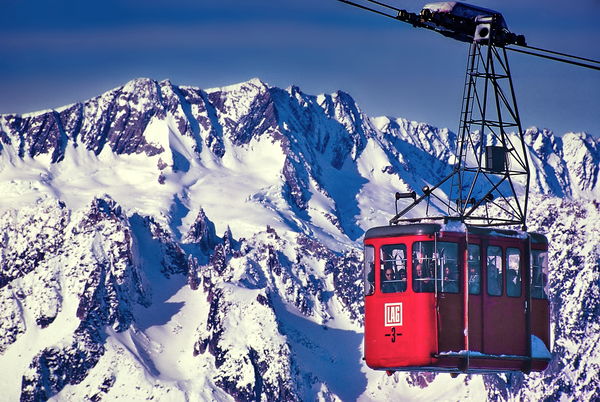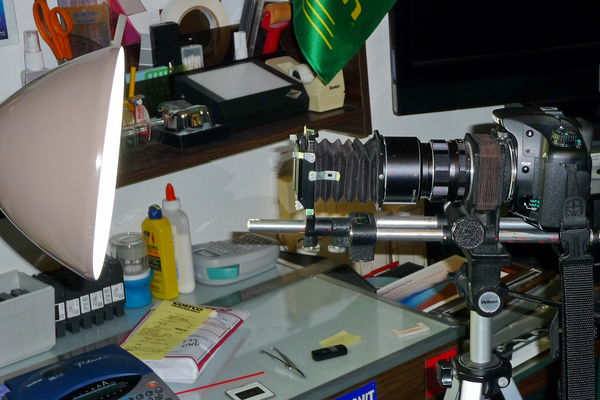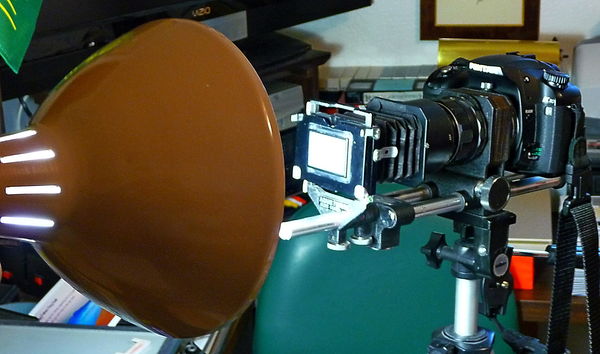Scanning slides - advice
Jun 6, 2019 09:31:40 #
rmalarz wrote:
I did something similar to your project a few years back. I'd suggest an Epson scanner and Silverfast software to drive the scanner. Much like taking a photograph, get the best results you can with the scan and process afterwards.
--Bob
--Bob


I spend time during scan sorting and loading another holder and watch Judge Judy.
In other words multitask rather than just sitting there watching the scanner scan.


Jun 6, 2019 09:46:40 #
Copying the slides with a good DSLR and Macro lens is MUCH faster than a slide scanner. Lightly post processing them for color, contrast, and dust (you can automate an action in Photoshop to do this) will make them indistinguishable from a slide scanner.
That's my advice. And I'm doing a job that way now. And the client, who is very picky, is very pleased. Much cheaper I might add too.
That's my advice. And I'm doing a job that way now. And the client, who is very picky, is very pleased. Much cheaper I might add too.
Jun 6, 2019 10:24:48 #
I rush and/or compressed air to clean all of them before anything else. It is much faster and better than trying to remove all of the dust in PP.
I then use my Nikon D-850 and a Nikon 60mm macro lens and slide duplicating kit to digitize. After dleaning, it took about 5 seconds per slide. Great quality up to the limit of the slides.
I then use my Nikon D-850 and a Nikon 60mm macro lens and slide duplicating kit to digitize. After dleaning, it took about 5 seconds per slide. Great quality up to the limit of the slides.
Jun 6, 2019 10:31:59 #
As I am almost at the end of the line, I started scanning the best of 35,000 transparencies plus Audio Visuals taken around the world in the last 70 years, 18 months ago. They were the best of many many more. Depending on the number of slides, it would pay you to look at a Plustek transparency scanner with Silverfast software. It will guide you through the whole process of colour, scratch removal, sharpening etc, etc. It is not cheap, but it does the very best job possible.
Jun 6, 2019 11:20:04 #
brent46 wrote:
This is a great way to scan slides. It is fast, and you can capture in raw and edit. D7100 with nikon 28-105 in the macro mode with 60 watt daylight led bulb.
This is what I did too. Except I bought an old slide copier for a film camera (under $20) on eBay. Then I use all the controls on my Sony to correct things. I also have an Epson scanner but as someone else mentioned, it's slow but very good.
Jun 6, 2019 11:22:34 #
Architect1776 wrote:
I used it with hundreds of Kodachrome slides with no problems at all on the Epson V750.
Got rid of dust just fine.
Got rid of dust just fine.
It is not supposed to work. It may change the scan. Try with and without to see if the colors and densities are affected. I do agree that it is an exercise in stupidity to scan slides without digital ICE, unless you love spending hours retouching every scan.
"Digital ICE is used to detect scratches and dust during transparent film scan and is not applicable for opaque document scanning. While chromogenic black-and-white films are supported by Digital ICE, other black-and-white films containing metallic silver, which form from silver halides during the development process of the film, are not. This is because the long wave infrared light passes through the slide but not through dust particles. The silver particles reflect the infrared light in a similar manner to dust particles, thus respond equally in visible light and infrared. A similar phenomenon also prevents Kodak Kodachrome slides from being scanned with Digital ICE. Kodachrome's cyan layer absorbs infrared."
Jun 6, 2019 12:06:20 #
Schoee wrote:
Hi, I hope people here can offer some advice. I am... (show quote)
Having personally done this, the best advice I can give you is to create a subset of all those slides BEFORE you scan. Unless your father was a professional photographer in the day, many of the slides wouldn’t be that great. Why take the time then to scan many of them and edit.
A couple of years ago I personally looked at about 2,000 slides, and culled out about 220 of the best slides for scanning, etc. These were passed on to my family, who really appreciated the quality of the best images, some of which created books of them.
Just my two cents.

Jun 6, 2019 12:25:47 #
brent46 wrote:
This is a great way to scan slides. It is fast, and you can capture in raw and edit. D7100 with nikon 28-105 in the macro mode with 60 watt daylight led bulb.
I do the same thing with a slide copier and bellows that I got for copying slides back in the 35mm film days (both Kodachrome and Ektachrome) instead of using any kind of scanner, and then I clean them up PP with my photo editing software (ACDSee) -- works great to digitize slides one at a time selecting ones that are worth keeping. Here's are a couple of photos of the setup I use and a sample of a digitized Kodachrome slide.



Jun 6, 2019 12:41:44 #
I owned a photo lab and have scanned thousands of slides.
My first question would be, what kind of scanner are you going to use? Many scanner software has dust and scratches, unsharp mask etc. built into the software when you scan.
I would scan all the slides first and organize them in folders according to topic, date or whatever. If you are going to open each slide I would perform all of the corrections at that time. Then when you save it you may assign a code to indicate it's been corrected. Like put a "C" in the name.
Depending on how much time and what equipment you have, it might be worth looking into the many slide scanning solutions out there. Might be worthwhile.
Also, you may look into scanners that "bulk" scan slides. Many out there.
My first question would be, what kind of scanner are you going to use? Many scanner software has dust and scratches, unsharp mask etc. built into the software when you scan.
I would scan all the slides first and organize them in folders according to topic, date or whatever. If you are going to open each slide I would perform all of the corrections at that time. Then when you save it you may assign a code to indicate it's been corrected. Like put a "C" in the name.
Depending on how much time and what equipment you have, it might be worth looking into the many slide scanning solutions out there. Might be worthwhile.
Also, you may look into scanners that "bulk" scan slides. Many out there.
Jun 6, 2019 12:43:36 #
"Unless your father was a professional photographer in the day, many of the slides wouldn’t be that great. Why take the time then to scan many of them and edit."
not so, its not about how good the Photos are, its about the history. be sure to pay attention to the backgrounds and don't crop too much as there are memorys there.
not so, its not about how good the Photos are, its about the history. be sure to pay attention to the backgrounds and don't crop too much as there are memorys there.
Jun 6, 2019 13:19:06 #
kymarto wrote:
It is not supposed to work. It may change the scan... (show quote)
If you say so.
Not my experience though.
Jun 6, 2019 13:20:05 #
Schoee wrote:
Hi, I hope people here can offer some advice. I am... (show quote)
Save 16 bit TIFFs. Decide on pixel dimensions. Up to 8x10 output, you need to capture 300 pixels per inch of *intended print size*.
Turn on Digital ICE on Epsons to remove dust, scratches, and restore some color.
In post:
Exposure/Brightness, blacks, shadows, highlights, whites, and White Balance, and/or color correction all come first. Then spot and repair and crop.
Sharpen sparingly, because that’s usually the last step before printing.
Jun 6, 2019 13:27:22 #
I use viewscan software with a canon scanner at 2400 dpi. I've used both Agfa and Heidelberg scanners for projects, but finding SCSI interface cards for the new gear is a real challenge.
Jun 6, 2019 13:28:01 #
I use viewscan software with a canon scanner at 2400 dpi. I've used both Agfa and Heidelberg scanners for projects, but finding SCSI interface cards for the new gear is a real challenge.
Jun 6, 2019 14:32:30 #
Schoee wrote:
Hi, I hope people here can offer some advice. I am... (show quote)
What type of scanner are you using, that should at least parcely answer your questions?
If you want to reply, then register here. Registration is free and your account is created instantly, so you can post right away.









